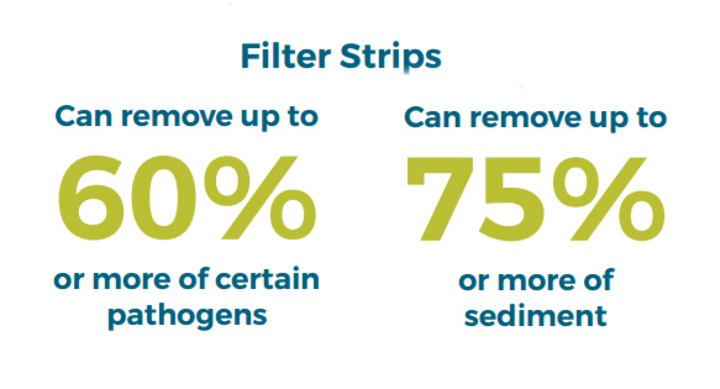Would you like to keep more of your topsoil on your farm while reducing contamination of water resources? Funding is available from the Nebraska Department of Agriculture to aid in the use of buffer strips to stabilize the environment and filter out sediments and agrichemicals that might otherwise enter field runoff.

The Nebraska Buffer Strip Program will pay landowners for using filter strips (narrow strips of grass) or riparian forest buffer strips (strips containing trees and grass) next to seasonal or permanent streams, wetlands, and ponds. The minimum widths are 20 feet for filter strips and 55 feet for riparian forest buffer strips; the maximum widths are 120 and 180 feet, respectively.
Buffer strips, used along with other best management practices, are a common sense approach to reducing sediment and agrichemicals in field runoff, notes Craig Romary, NDA environmental program specialist in the animal and plant health division. The USDA Natural Resources Conservation Service reports that filter strips have been shown to remove 30-60% of pesticides in field runoff, depending on site conditions, including width of filter strip, pesticides used, field conservation practices, and runoff volume. Buffer strips have also been shown to remove 75% of sediment from runoff.
Buffer strip contracts run from 5 to 10 years. State program payments vary from $20 to $250 per acre, depending on soil type, whether the acres are irrigated, and whether payments are received from other programs. This program is designed to be used in conjunction with the USDA Conservation Reserve Program (CRP), Conservation Reserve Enhancement Program (CREP), or other programs, but can also be used by itself.
For more information on adding buffer strips to your conservation plan, visit NDA’s website at bit.ly/NDAbuffer or call NDA at 402-471-2351. To begin the application process, interested landowners should contact their local Natural Resources District or USDA Natural Resources Conservation Service office in Nebraska.
More Information
For more information see the USDA NRCS Publication, Conservation Buffers to Reduce Pesticide Losses, which covers how buffers reduce pesticide loss, types of buffers, and buffer design, construction, and maintenance.

